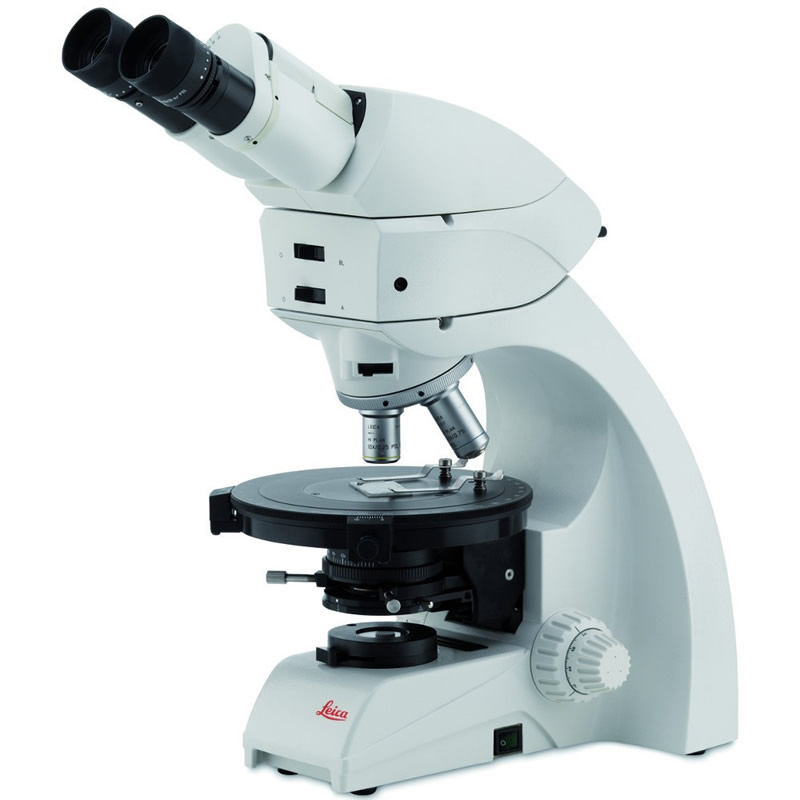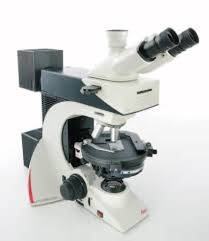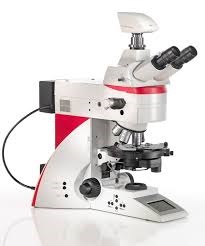The Leica DM750 P polarizing microscope was specifically developed to revitalize earth science teaching and to achieve the goal of more hands-on time for Earth and Materials Science courses.

The Leica DM2700 P ensures that every user can work at the microscope in a relaxed manner. The height of the microscope’s focus knobs can be individually adjusted to fit each user’s exact hand size, which prevents hand, arm, and shoulder tension and ensures a comfortable and fatigue-free posture.
The built-in focus stop protects your samples and the front lens of the objective. For samples of equal height, the focus stop makes the focusing plane easier to reconstruct so you can concentrate entirely on your application.

The Leica DM4 P automatically detects which contrast method and objective are being used. This provides valuable consistency and reproducibility for your research. Manual diaphragm setting is no longer required, either in the transmitted light or incident light method. You can concentrate on your work.
The Leica DM4 P transmitted and incident light axis are now equipped with state-of-the art high-power LED illumination, contrastable to 100 W halogen lamp. The long lifetime LED with at least 50.000 h is suitable for all incident and transmitted light contrasting methods. By the constant color temperature at all light intensity levels the object appears always at its real color. Permanent white balancing on camera is not longer required.

